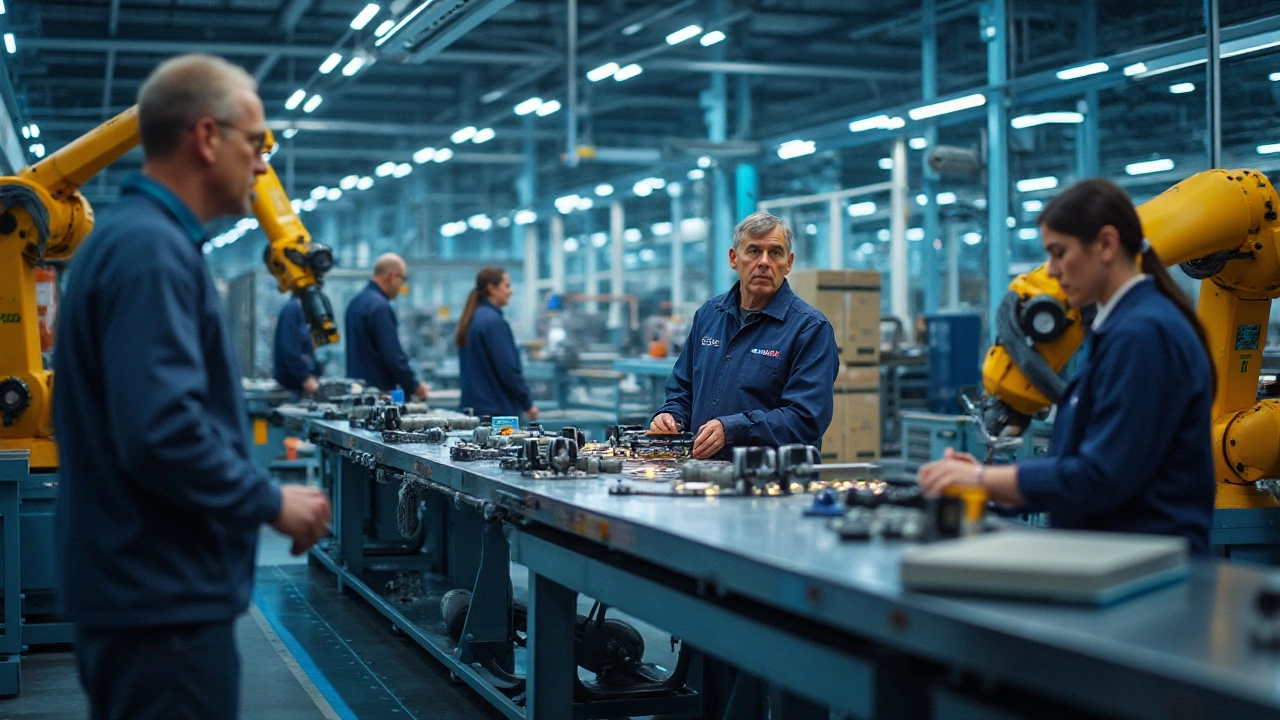Prototype: Foundations, Fast-Track Design & Sustainable Production
When talking about prototype, a preliminary model used to test ideas, functions and market appeal before full‑scale production. Also known as a model, a prototype lets designers spot flaws early, cut costs and speed up launch. In today’s fast‑moving market, rapid prototyping, the use of 3D printing, CNC machining or fast‑fabrication methods to create test units quickly is the engine that drives that speed. But a prototype isn’t useful without prototype testing, systematic trials that assess performance, durability, user experience and compliance. And when the goal is sustainability, the process ties directly into sustainable manufacturing, production practices that minimize waste, energy use and environmental impact. Together these concepts form a loop: design ideas become rapid prototypes, which undergo testing, informing greener manufacturing decisions.
Why does this loop matter across sectors? In the factory world, companies hunting the highest‑paying jobs are also scrambling for the most efficient production lines. Fast prototype cycles let plant managers evaluate new equipment—like the latest recycled‑plastic extrusion units—before committing capital. That’s why the 2025 plastic demand report highlights rPET and rHDPE as winners; manufacturers can prototype new resin blends, test their flow properties, and adjust recipes without large‑scale waste. Similarly, the automotive slowdown in India isn’t just about sales; it reflects a shift toward electric‑ready designs that start as chassis prototypes. Engineers build a mock‑up, test it on a small track, and decide if the new battery layout is worth scaling.
From Seeds to Steel: Prototypes in Agriculture and Industry
Agriculture gets the prototype treatment too. When scientists explore which civilization first cultivated rice, they create seed prototypes—genetically tweaked varieties that promise higher yields or drought resistance. Those seed prototypes are field‑tested, much like a container‑garden watering schedule. If a new rice strain holds moisture better, growers can adjust irrigation patterns, cutting water use while keeping yields high. The same logic applies to no‑till gardening: a prototype plot with cover crops is set up, its soil health measured, then the method spreads if results are positive.
In the textile arena, the richest textile companies prototype new fabrics—think cotton blends that combine softness with strength. They test fabric durability, dye uptake and labor impact, feeding those results back into sustainable manufacturing pipelines. The same approach drives the search for the best steel; metallurgists craft alloy prototypes, stress‑test them, and then decide which nation’s steel mills should adopt the formula.
Every industry you see in our post collection—whether it’s the most expensive plant in India, the biggest pharmaceutical producers, or the booming floral market—relies on this prototype‑testing‑sustainability chain. A high‑paying factory job often starts with a prototype role: a process engineer designing a test run for a new polymer line. An entrepreneur eyeing profitable manufacturing ideas will first sketch a prototype business model, run a small pilot, and refine it before scaling.
Understanding prototypes also helps everyday gardeners. The guide on daily watering for container gardens points out that you can prototype a watering schedule: start with a conservative routine, monitor soil moisture, and adjust based on real‑time feedback. The drip‑irrigation‑under‑mulch article shows how you can prototype a combined system in a corner of the garden, observe root health, then roll it out across the whole plot.
All these examples illustrate the same semantic triple pattern: Prototype encompasses rapid prototyping, Prototype requires testing, and Sustainable manufacturing influences prototype development. When you see a new product, think of the hidden prototype loop that made it possible.
Below you’ll find a curated set of articles that dive deeper into each of these areas—whether you’re curious about plastic resin trends, want a step‑by‑step guide to drip irrigation, or are exploring high‑paying factory roles. The collection brings together practical tips, industry data and real‑world case studies, all tied together by the prototype mindset.
How to Start Manufacturing an Idea: Your Small Scale Roadmap
Got an idea and wonder how to actually make it? This article breaks down the real steps—without the fluff. You’ll learn how to turn a sketch on paper into a real, physical product, even if you don’t have a big factory behind you. Find out how to test your idea, where to find the right help, what mistakes most newcomers make, and how people get products to market without millions in the bank. Wherever you’re starting from, you’ll see what works and what doesn’t.
- manufacturing
- India
- food processing
- garden tips
- rice cultivation
- government schemes
- balcony garden
- urban gardening
- balcony gardening
- profitable business
- business ideas
- plastic manufacturing
- drip irrigation
- plant care
- steel manufacturing
- sustainable gardening
- startup ideas
- steel industry
- flower gardening
- textile manufacturers






